The basic idea of sacrifice branches is a simple one: develop sacrifice branches in order to thicken the trunk and then remove them when the trunk reaches the desired thickness.
The application of this idea is where things can get tricky, so let’s start with a simple example.
My goal for the pine below has been to develop a trunk with interesting movement but little taper. To achieve this, I let a single sacrifice branch grow from a spot near the future apex while maintaining relatively low branches that can be used to fill in the future silhouette.
Japanese black pine – 14-years old
The sacrifice branch has been growing freely for about 7 years. During this time, the trunk grew to its current thickness. Because I am satisfied with the diameter of the trunk, I removed the sacrifice branch.
After removing the sacrifice branch
From this point forward, my strategy for developing the tree will shift from growing the trunk to refining the branches. This is where techniques such as branch thinning, needle plucking and decandling come into play.
I began this refinement work by shortening two of the larger branches on the tree in an effort to encourage new growth closer to the trunk.
Large branch
After shortening the branch
I did the same thing on a second branch by removing the long shoots and leaving several smaller ones closer to the trunk.
Branch to be shortened
After shortening
Those few cuts are the extent of the work I’ll do on the tree this season. Now would be an appropriate time to wire the branches I want to work with, but since the spring buds have started elongating, I’m better off wiring them later in the year.
Spring work complete – 13″ after cutback
Subscribe to Bonsai Tonight
New Posts Delivered Every Tuesday and Friday

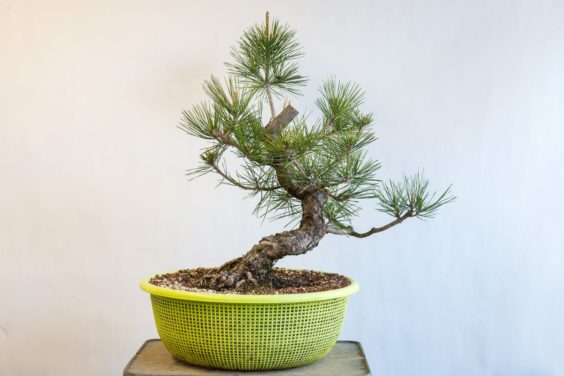
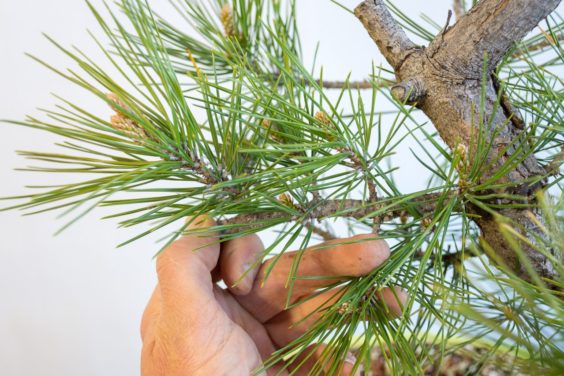
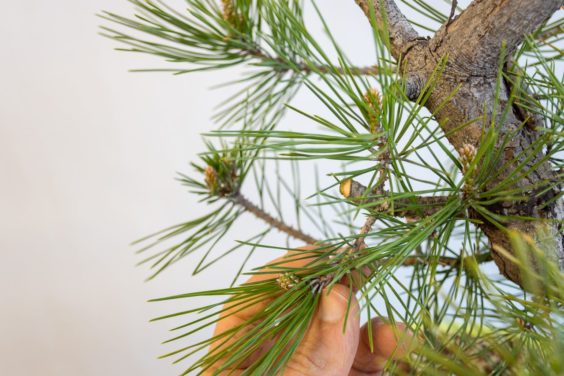
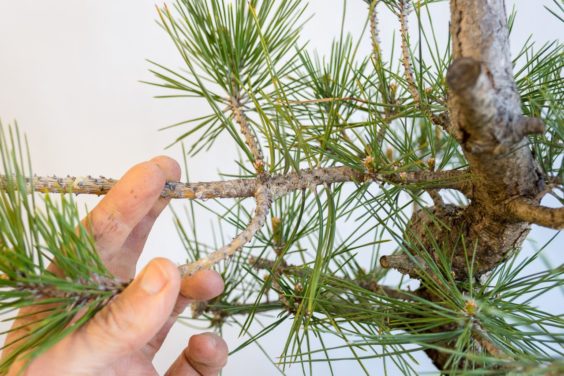
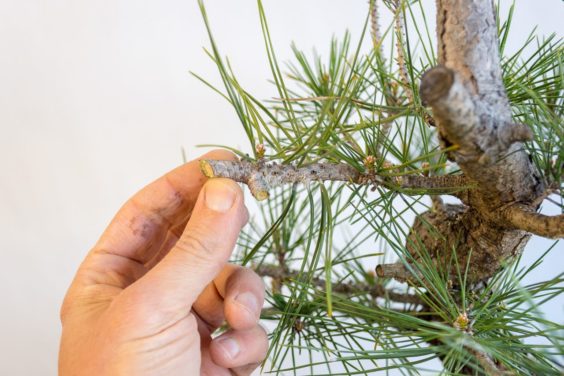
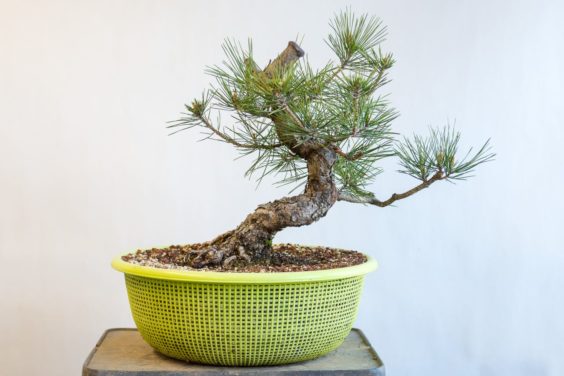
Lani Black says
What an interesting shape and great nebari you have developed. Also lots of lower branches and shoots. I was wondering if you never wired these lower branches in the 7 years of growing out? What size tree will this be when in the refinement stage?
Jonas Dupuich says
Thanks, Lani! I’m not sure I’ve ever wired any branches on the tree. I wired the trunk years ago, and there’s a chance I wired something at some point, but for the most part the lower branches have grown slowly for the duration of the tree’s life. I expect the final height to be close to the current height – about 12-13 inches.
Don B says
How early do you wire the trunk. Assuming you start from seed. And how do you encourage buds down low on the trunk like this tree? Did you cut candles in year two or three?
Jonas Dupuich says
Hi Don! I first wire the trunk in year two or three. It’s possible I’ve never decandled the tree, though I may have decandled some of the lower branches a few years ago. As for encouraging low buds on the tree, see the discussion at: https://ask.bonsaitonight.com/t/how-to-create-buds-low-on-the-trunk-of-young-japanese-black-pine-seedling/1224
Ross Henderson says
Hi Don, just wondering if the beginning of spring is the best time of the year to remove sacrificial and other major branches or can it be done at other times as well. Thanks
Jonas Dupuich says
Good question – I usually remove sacrifice and other major branches in early spring or summer to encourage healing during the growing season.
Brian mcG rath says
Sorry way off topic
Hi Jonas
I have a malus? Bought the seed 15 years ago and for the first time it has maybe 20 flowers ready to pop.we live on the east coast of Vancouver ls. Back to the chase. My other apples are maybe 2 weeks behind. Now does a craby need a cross pollinator or do they do the deed on their own.
Thankyou
Jonas Dupuich says
Hi Brian – good question for the forum: https://ask.bonsaitonight.com/
Some crabapples are sterile, others can self pollinate. It’s not uncommon for some varieties to wait 15 years like yours before flowering.
Adam says
Hey Jonas,
When growing a trunk with multiple sections of sacrifices to induce taper, how much more will the previous sections grow in comparison to the sacrifice ? Is there a magical formula?
Jonas Dupuich says
Good question! As I’m generally focused on the size of the active sacrifice branch and the relationships between the different sections I haven’t thought as much about how lower sections continue to thicken. With smaller trees I don’t notice much additional thickening at all. I tend to get all the thickening I want from a given section and if a bit more happens along the way, that’s great.
One way to theoretically calculate this would be to compare the area of a cross section of the sacrifice branch with the area of a cross section of the trunk, though I’m not sure the approach would be accurate.
John says
Where in the Sam hill do those colanders come from?
Jonas Dupuich says
Hi John – there are some suggestions here: https://ask.bonsaitonight.com/t/where-can-i-find-those-pots/306/2
William Lambeth says
Jonas, you are a master with black pine!
Jonas Dupuich says
Ha – Thanks William!